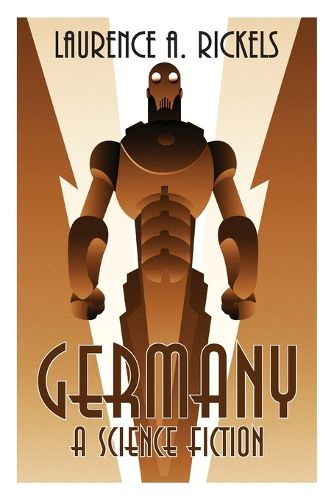Readings Newsletter
Become a Readings Member to make your shopping experience even easier.
Sign in or sign up for free!
You’re not far away from qualifying for FREE standard shipping within Australia
You’ve qualified for FREE standard shipping within Australia
The cart is loading…






This title is printed to order. This book may have been self-published. If so, we cannot guarantee the quality of the content. In the main most books will have gone through the editing process however some may not. We therefore suggest that you be aware of this before ordering this book. If in doubt check either the author or publisher’s details as we are unable to accept any returns unless they are faulty. Please contact us if you have any questions.
In I THINK I AM: PHILIP K. DICK, Laurence A. Rickels investigated the renowned science fiction author’s collected work by way of its relationship to the concept and condition of schizophrenia. In GERMANY: A SCIENCE FICTION, he focuses on psychopathy as the undeclared diagnosis implied in flunking the empathy test. The switch from psychosis to psychopathy as an organizing limit opens the prospect of a genealogy of the Cold War era, which Rickels begins by examining Dick’s THE SIMULACRA and follows out with readings of SIMULACRON 3, FAHRENHEIT 451, THE DAY OF THE TRIFFIDS, THIS ISLAND EARTH and GRAVITY’S RAINBOW, among many other genealogical stations. Nazi Germany hosted the first season of the realization of science fantasy with the rocket at the top of this arc. After World War II, the genre had to delete the recent past and start again within the new Cold War opposition. Certainly the ancestral prehistory was still intact (in the works of, for instance, Jules Verne and H. G. Wells). At the bulk rate of its generic line of production, however, science fiction would thereafter become a native to the Cold War habitat. This study addresses the syndications of the missing era in the science fiction mainstream, the phantasmagoria of its returns, and the extent of the integration of all the above since some point in the 1980s. Rickels works through the preliminaries of repair that must be met in a world devastated by psychopathic violence before mourning can even be a need. While I THINK I AM was the endopsychic allegory of Dick’s corpus, GERMANY takes the corpus as a point of context for the endopsychic genealogy of the post-WWII containment and integration of psychopathy.
$9.00 standard shipping within Australia
FREE standard shipping within Australia for orders over $100.00
Express & International shipping calculated at checkout
This title is printed to order. This book may have been self-published. If so, we cannot guarantee the quality of the content. In the main most books will have gone through the editing process however some may not. We therefore suggest that you be aware of this before ordering this book. If in doubt check either the author or publisher’s details as we are unable to accept any returns unless they are faulty. Please contact us if you have any questions.
In I THINK I AM: PHILIP K. DICK, Laurence A. Rickels investigated the renowned science fiction author’s collected work by way of its relationship to the concept and condition of schizophrenia. In GERMANY: A SCIENCE FICTION, he focuses on psychopathy as the undeclared diagnosis implied in flunking the empathy test. The switch from psychosis to psychopathy as an organizing limit opens the prospect of a genealogy of the Cold War era, which Rickels begins by examining Dick’s THE SIMULACRA and follows out with readings of SIMULACRON 3, FAHRENHEIT 451, THE DAY OF THE TRIFFIDS, THIS ISLAND EARTH and GRAVITY’S RAINBOW, among many other genealogical stations. Nazi Germany hosted the first season of the realization of science fantasy with the rocket at the top of this arc. After World War II, the genre had to delete the recent past and start again within the new Cold War opposition. Certainly the ancestral prehistory was still intact (in the works of, for instance, Jules Verne and H. G. Wells). At the bulk rate of its generic line of production, however, science fiction would thereafter become a native to the Cold War habitat. This study addresses the syndications of the missing era in the science fiction mainstream, the phantasmagoria of its returns, and the extent of the integration of all the above since some point in the 1980s. Rickels works through the preliminaries of repair that must be met in a world devastated by psychopathic violence before mourning can even be a need. While I THINK I AM was the endopsychic allegory of Dick’s corpus, GERMANY takes the corpus as a point of context for the endopsychic genealogy of the post-WWII containment and integration of psychopathy.